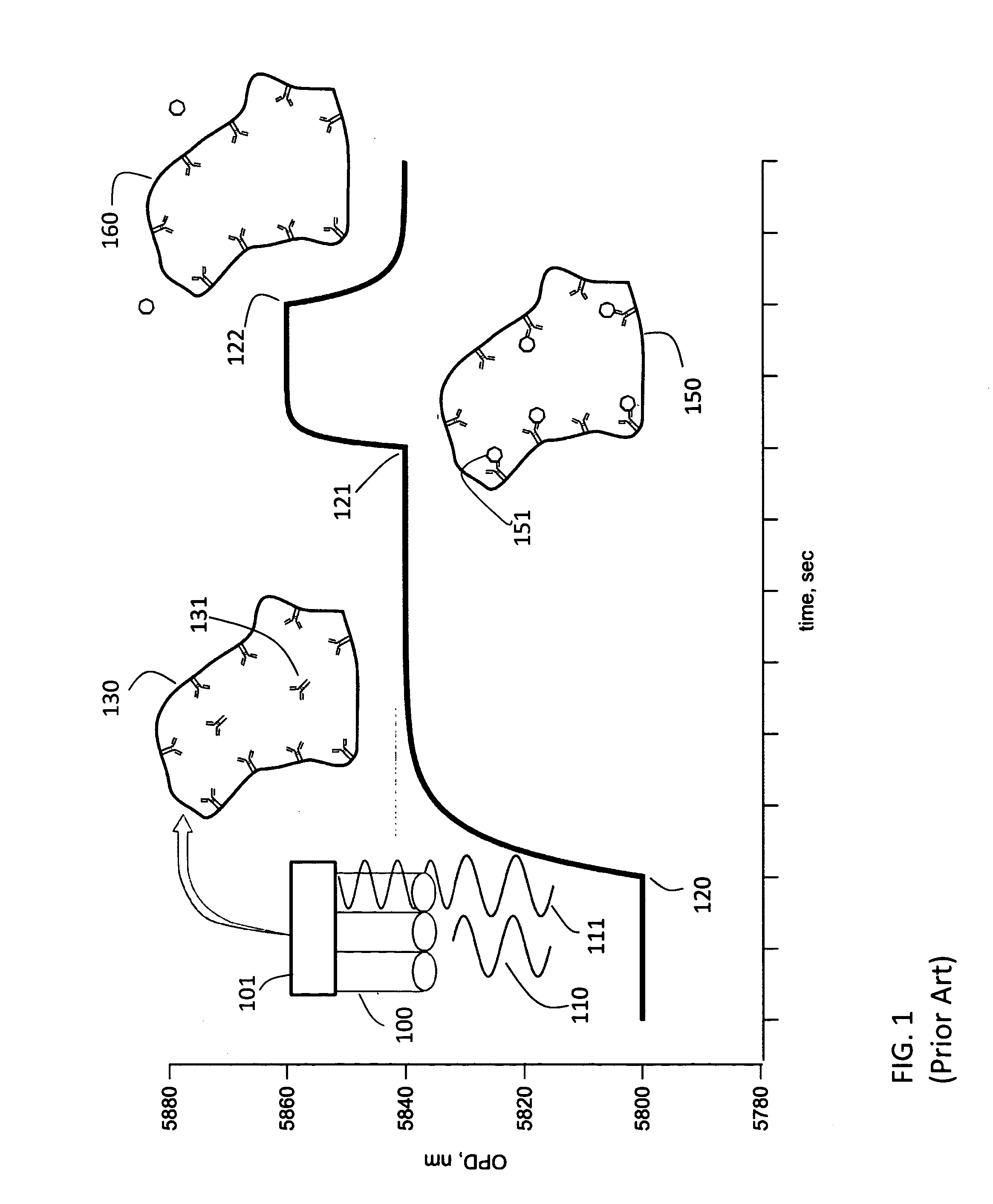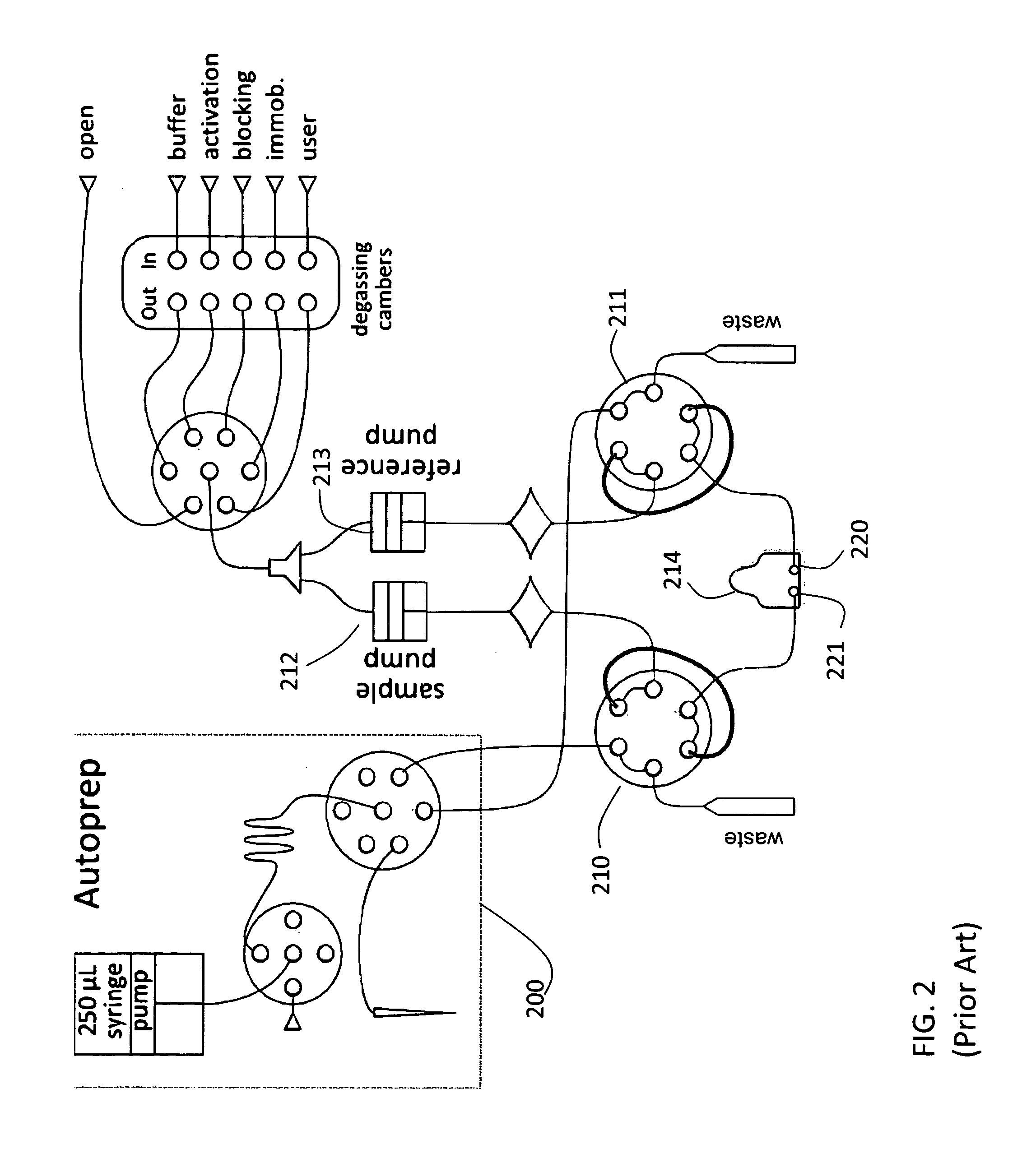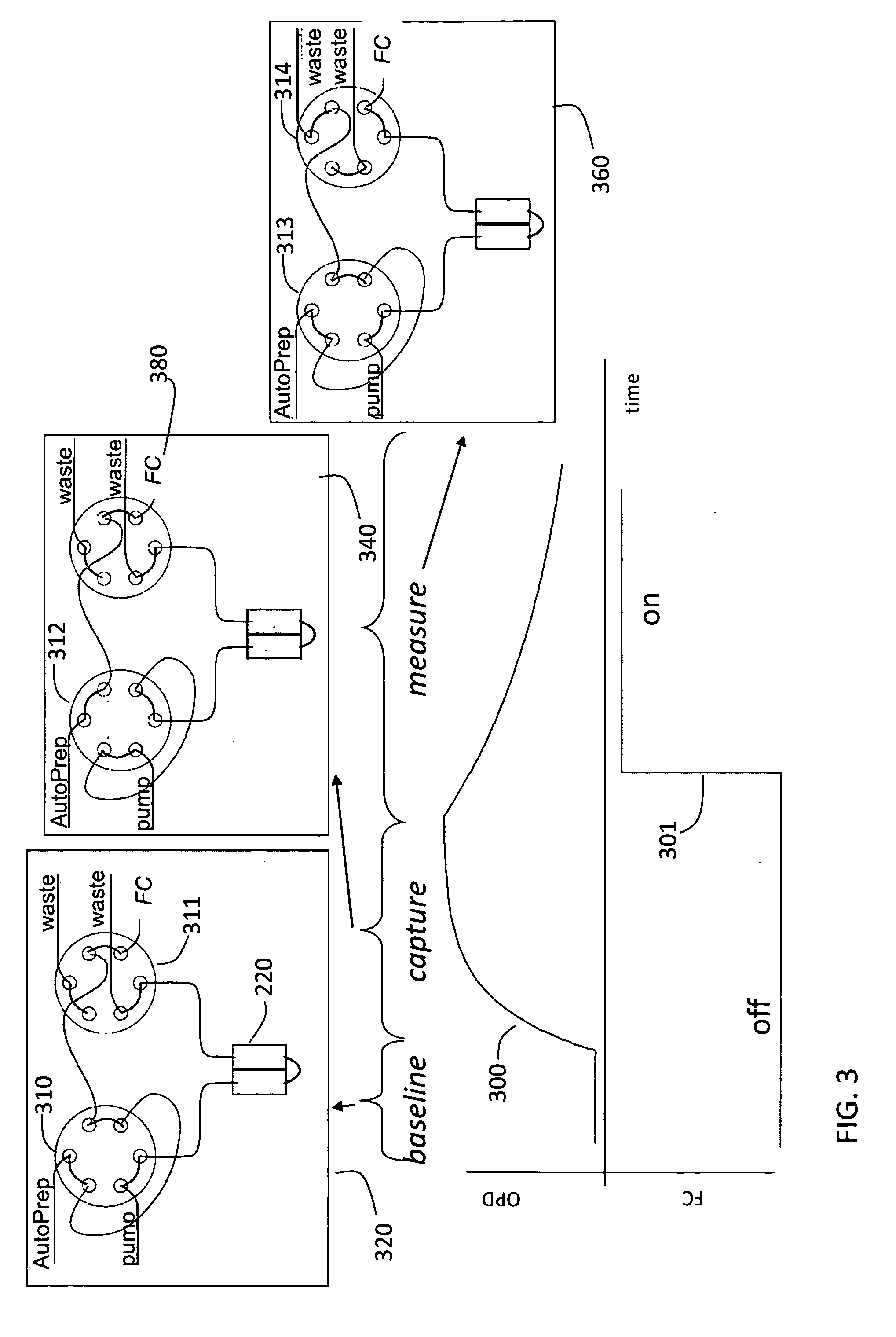Affinity capture mass spectroscopy with a porous silicon biosensor
a biosensor and porous silicon technology, applied in the field of mass spectroscopy and optical biosensors, can solve the problems of inability to achieve mass spectroscopy. the effect of high degree of freedom
- Summary
- Abstract
- Description
- Claims
- Application Information
AI Technical Summary
Benefits of technology
Problems solved by technology
Method used
Image
Examples
first preferred embodiment
Flow Cell with Electrospray and Fraction Collection
[0055]The first embodiment is sketched in FIG. 3. The NPOI flow cell instrument is used together with a fraction collector. This fraction collector could simply be a collection vessel of some sort. Initially capture molecule is placed on the porous silicon chip using a typical flow cell procedure. A carboxyl chip shown at 214 in FIG. 2, used for amino coupling, is used. This contains both a sample and reference channel 220 and 221. Using the AutoPrep 200 and two 6-port, 2-position injection valves, one for the sample 210 and one for the reference 211, solutions are introduced to the flow cell. Initially the chip is activated using water as running buffer, pumped by two separate pumps one for sample 212 and one for reference 213, at 8 μL / min. A solution of 200 mM, 1-ethyl-3-(3-dimethylaminopropyl) carbodiimide (EDC) and 50 mM sufo N-hydroxysuccinimide (sNHS) is used to activate the chip for 8 minutes. Then a solution of 20 μg / mL capt...
second preferred embodiment
Flow Cell with Electrospray and Direct Elution
[0058]The second preferred embodiment is sketched in FIG. 4. Similar to the first embodiment, this second embodiment replaces the fraction collection output with an input directly into the mass spectrometer. Here, capture agent is immobilized as before and binding is initiated as before by a switch in the sample injection valve from the loading position with valves as shown at 420 to the inject position (440), however in this case binding buffers must be compatible with mass spectrometer ionization. The output to the mass spectrometer is sent into a y-union (not shown) in which a 0.1% formic acid in methanol mixture is added to the eluent from the flow cell device in order to aid electrospray ionization.
[0059]A specific example of such an approach is shown in FIG. 9. Here carbonic anhydrase II (CAII) (the ligand), an enzyme from bovine erythrocytes, is immobilized on the carboxyl chip at 100 μg / mL for 15 minutes. Furosemide (the analyte)...
third preferred embodiment
Flow Cell with Electrospray and LC Trap and Elute
[0062]The third preferred embodiment is sketched in FIG. 5. This differs from the first and second embodiment in that a trap chromatography column 530 is placed on the reference side injection valves, a C18 packing is used in a 2.7 μM4 Opti-Pak trap from Optimize technologies (Oregon City, Oreg.). In this embodiment, the enrichment phase 520 proceeds as before with the sample injection valve sampling routing the flow cell eluent to waste while a liquid chromatography device (e.g. an Agilent 1100, Agilent Corporation, Santa Clara, Calif.) attached to the reference injection valve configured as shown at 532 flows water across the trap into a mass spectrometer (not shown). However, during capture, when conditions become dissociative, the reference injection valve configured as shown at 533 now switches to route the flow cell eluent onto the trap column. The trap column will then trap the reagent flowing across from the cell. This occurs ...
PUM
 Login to View More
Login to View More Abstract
Description
Claims
Application Information
 Login to View More
Login to View More - R&D
- Intellectual Property
- Life Sciences
- Materials
- Tech Scout
- Unparalleled Data Quality
- Higher Quality Content
- 60% Fewer Hallucinations
Browse by: Latest US Patents, China's latest patents, Technical Efficacy Thesaurus, Application Domain, Technology Topic, Popular Technical Reports.
© 2025 PatSnap. All rights reserved.Legal|Privacy policy|Modern Slavery Act Transparency Statement|Sitemap|About US| Contact US: help@patsnap.com



